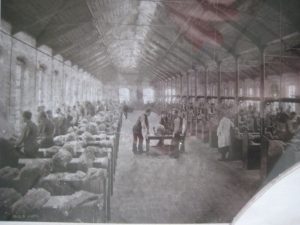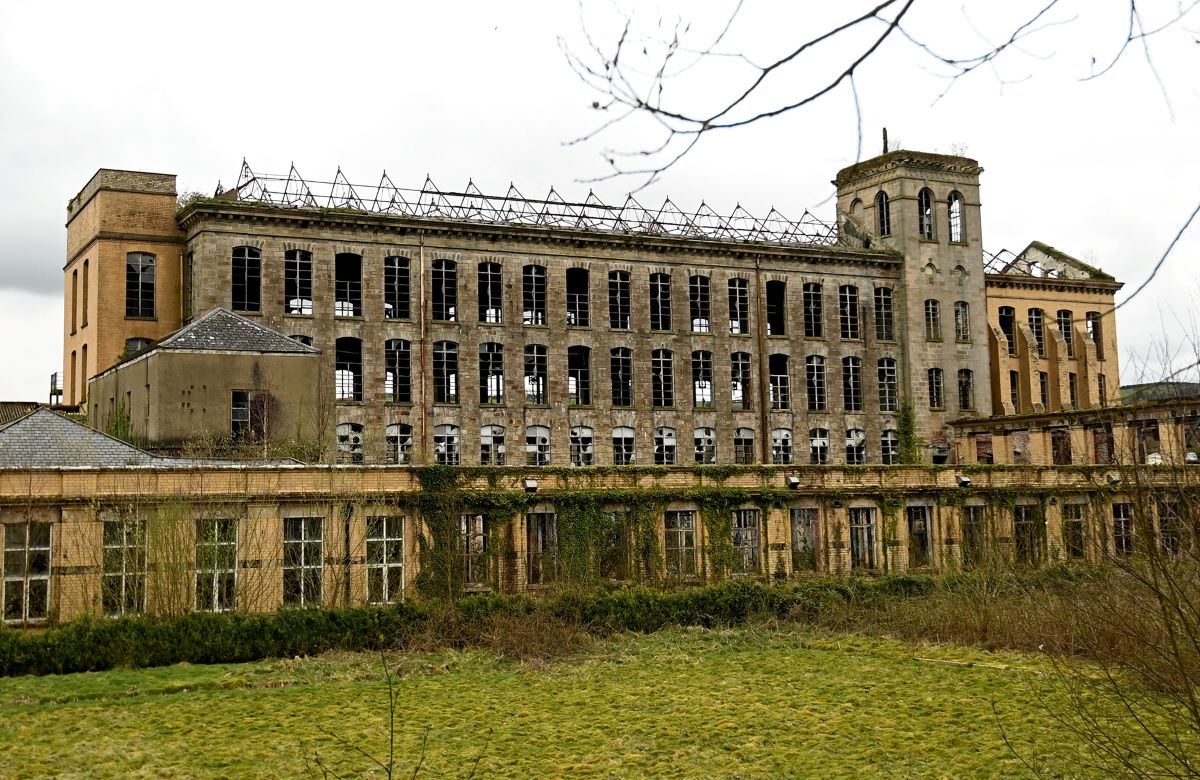By Emily Gervais
The story of Sion Mills and the Herdman family is indeed remarkable.
The quaint little village is probably most renowned for its legacy as an Irish linen dynasty and the 200-year-old Herdmans Mill that once employed over 1,000 people.
But many people may not be aware of just how much the Herdman family shaped the community, and enhanced the quality of life for local people over generations.
The Herdmans first came to Ireland in 1688 with a Captain Herdman from Herdmanston, Ayrshire, who fought with William III at the Battle of the Boyne and then settled at Glenavy, Co Antrim.
In the early 1800s, three Herdman brothers, James, John and George, inherited the Millfield Tannery in Belfast from their father.
They then bought an unfinished flax-spinning mill in West Tyrone from the 2nd Marquess of Abercorn and leased the site at Sion, by the banks of the River Mourne.
To say the siblings had a huge impact on the village is something of an understatement.
In 1835 they built the huge flax mill, now a heritage site, fashioning a beautiful and unique mix of the Georgian and Victorian architectural styles.
With the mill, the Herdmans provided the village with up to 1,500 jobs.
But the brothers didn’t stop there: They also created creating housing, schools, churches, and sports and leisure facilities.
They strongly believed in education, and that everyone should have the right to it, which is why they also gave adults an opportunity to educate themselves in evening classes.
Within a few years of establishing the mill, the Herdmans had laid gasworks and pipes which also provided street lighting as well as lighting for every home and business.

They also built other buildings of historical importance such as the Sion House and the Camus Rectory.
The Herdmans aspired to have a workforce and community which was completely integrated.
They helped achieve this through their love of sport, specifcally cricket, which Sion Mills became particularly well-known for.
But the brothers weren’t fans of alcohol, and it wasn’t until they lost a court case in 1896, that Sion Mills finally got its own public house.
However, everything evolved from the flax mill.
The Herdmans acquired their reputation for excellence in producing the finest linen yarn in the world, and, at its height, the flax mill employed 1,500 people.
The firm survived through thick and thin for 170 years after the original mill was built, and a new one was created in 1989, which, at the time, was the most modern flax-spinning mill in the world.
Around 600 people were employed by Herdmans at this stage, but they quickly experienced a rapid downturn due to the increasing competition with China, which by then had cornered the whole production of linen in Europe.
Herdmans Ltd finally closed for good in 2004, and the community was devastated with the loss of 600 jobs.
Since its closure, the mill experienced several suspected arson attacks between 2015-19, leaving its once grandeur structure fragile and damaged.
By then, it had been bought by Strabane woman, Margaret Loughrey, who famously won almost £27 million in the Euromillions jackpot.
Ms Loughrey died in 2021, but now the future is starting to look brighter for one of Northern Ireland’s most historical industrial sites.
Food and drinks firm, Mulrines, is redeveloping 22 acres of the the former Herdman’s Mill site to create a new manufacturing facility which it hopes will be operational by 2026, creating 54 jobs.
It’s a far cry from the employment of the glory days of the mill, but it’s still a vital boost to a village which owes so much to the Herdman
family.







